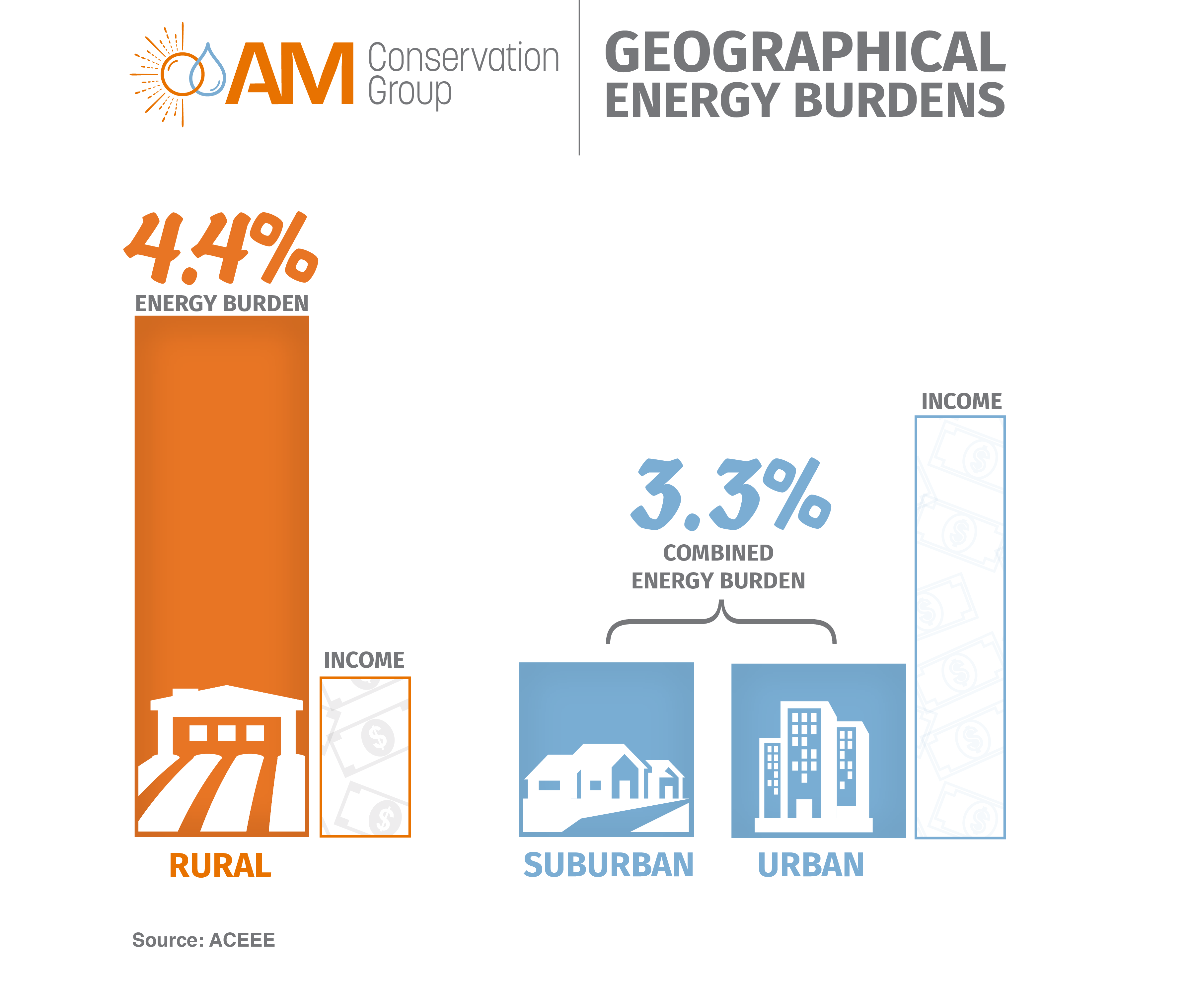In urban and suburban areas, utility customers have multiple ways they can conserve power and save on their energy bills. They have a median energy burden of 3.3%. But this is not the case in rural areas. Americans in rural, low-income areas spend a higher percentage of their incomes on their energy bills, with a median energy burden of 4.4%, a number nearly three times higher than their urban counterparts.

Rural areas have high concentrations of low-income areas. So they’re faced with a double whammy: Their energy costs are higher, but many cannot afford to invest in the upgrades—like weatherization products, LED lighting or ENERGY STAR® appliances—that would bring savings. It’s a cycle of energy-insecure poverty. According to a recent research report from ACEEE, these Americans also tend to have low credit scores, keeping them from borrowing the funds to make improvements that would ultimately save them money.
Particularly hard hit are the elderly, nonwhites, renting households and those in multifamily and prefabricated homes. The elderly live on low, fixed incomes. When energy costs rise, they face tough decisions about whether to spend money on energy bills or food or medicine at least one month out of the year.
Renting households, which make up a quarter of rural households, walk a fine line as well. The homeowners might not be willing to make upgrades on a home they’re not living in if someone is still willing to rent it without the upgrades. The renters, on the other hand, whether they can afford it or not, might not want to invest in energy-saving measures for a home they don’t own, even if it means saving more money in the long run.
Another reason for the energy-efficiency gap is the rural housing unit itself. These units tend to be larger and older than urban units. The median age of the typical rural home is 45 years. These drafty older homes require more upkeep than their newer, energy-efficient counterparts. And while many of these households use fuel oil and propane, the providers of these fuels don’t fund weatherization and energy-saving programs. The electric utilities that do offer efficiency programs don’t offer incentives for these other fuels.
About 70 percent of prefabricated homes are in rural areas. Though these homes consume less energy than site-built homes, they spend about 70 percent more on energy per square foot because they use electricity as their main heating source and are poorly weatherized and insulated.
Lack of accessible broadband Internet also keeps rural residents from using energy-saving smart technologies like smart thermostats.
Rural cooperatives themselves are often strapped for cash when it comes to offering efficiency programs that could meet the significant needs of their communities, too.
All this adds up to problems that go beyond economics. Energy-insecure households have higher rates of illnesses, particularly in children and the elderly, including respiratory problems from exposure to mold, cold air, allergens and air pollution. This, in turn, puts more strain on healthcare providers and weakens rural communities. There are increasing partnerships between healthcare organizations and energy providers endeavoring to reduce hospital readmissions and negative health implications due to energy insecurity.
But despite the challenges, utilities are finding innovative ways to reach these hard-hit customers. One way is by providing online marketplaces and kit programs. Energy and water conservation kits can contain a variety of low-cost energy-saving items, such as LED bulbs, a furnace filter whistle (which whistles once it’s time to change the filter), faucet aerators and other items such as LED nightlights. These easy-to-implement and cost-effective programs are a small step toward money and energy savings in these rural communities.






